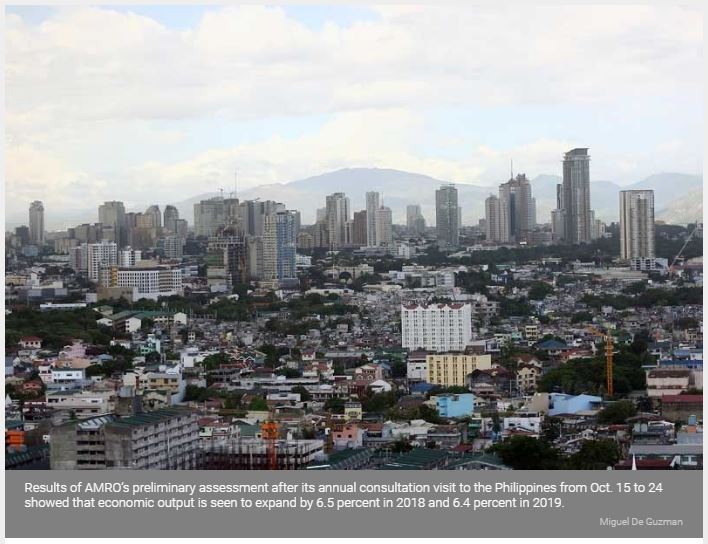Philippines seen sustaining growth amid high inflation
MANILA, Philippines — The economy is expected to sustain its robust growth this year and the next because of strong government spending and investment, but stability must be prioritized amid strong inflationary pressures and external headwinds, according to the ASEAN+3 Macroeconomic Research Office.
Results of AMRO’s preliminary assessment after its annual consultation visit to the Philippines from Oct. 15 to 24 showed that economic output is seen to expand by 6.5 percent in 2018 and 6.4 percent in 2019.
The country’s economic growth moderated to 6.3 percent in the first half of 2018, but is expected to pick up in the second half and continue to expand robustly in 2019, fueled by consumption and the government’s ambitious infrastructure program, said the regional macroeconomic surveillance organization.
The mission was led by AMRO lead economist Siu Fung Yiu and chief economist Hoe Ee Khor. Discussions during the policy meetings centered on economic prospects and challenges ahead of policy responses.
“The Philippine economy is expected to continue its robust growth, expanding by 6.5 percent in 2018 and 6.4 percent in 2019, broadly in line with its potential,” Yiu said.
“However, the economy is facing challenges from rising inflation, wider, tightening global financial conditions, and an escalation of the ongoing global trade tensions. Thus, the authorities should strive to maintain the overall policy direction, while recalibrating the policy mix to maintain stability and guard against risks,” Yiu said.
Inflation accelerated to 6.7 percent in September from 6.4 percent a month ago mainly because of supply shocks amid strong domestic demand. The Philippine Statistics Authority (PSA) is expected to announce the October inflation growth rate on Nov. 6.
The Development Budget Coordination Committee (DBCC) adjusted upwards the inflation forecast for this year to a range of 4.8 percent to 5.2 percent as well as next year’s assumptions to a range of two percent to four percent.
This is consistent with the government’s assessment that inflation would ease to the target level by next year.
AMRO said inflation is expected to peak in the last quarter of the year and trend downwards toward the middle of the target range next year.
Amid strong prospects for economic growth, AMRO said near-term challenges need to be addressed particularly those pertaining to inflation such as rising inflation expectations, higher-than-expected minimum wage increase, and a volatile external environment — the trade war between China and US and rising interest rates in major economies.
The DBCC lowered last month the country’s economic growth forecast to a range of 6.5 percent to 6.9 percent for this year from the previous forecast of seven to eight percent. The growth forecast of seven to eight percent for next year, however, was maintained.
To sustain high and stable growth over the long-term, AMRO said monetary policy should be “appropriately tight” to anchor inflation expectations and curb second round effects.
Source: https://www.philstar.com/business/2018/11/01/1864816/philippines-seen-sustaining-growth-amid-high-inflation#601jji3Gujwps8sf.99


 English
English




